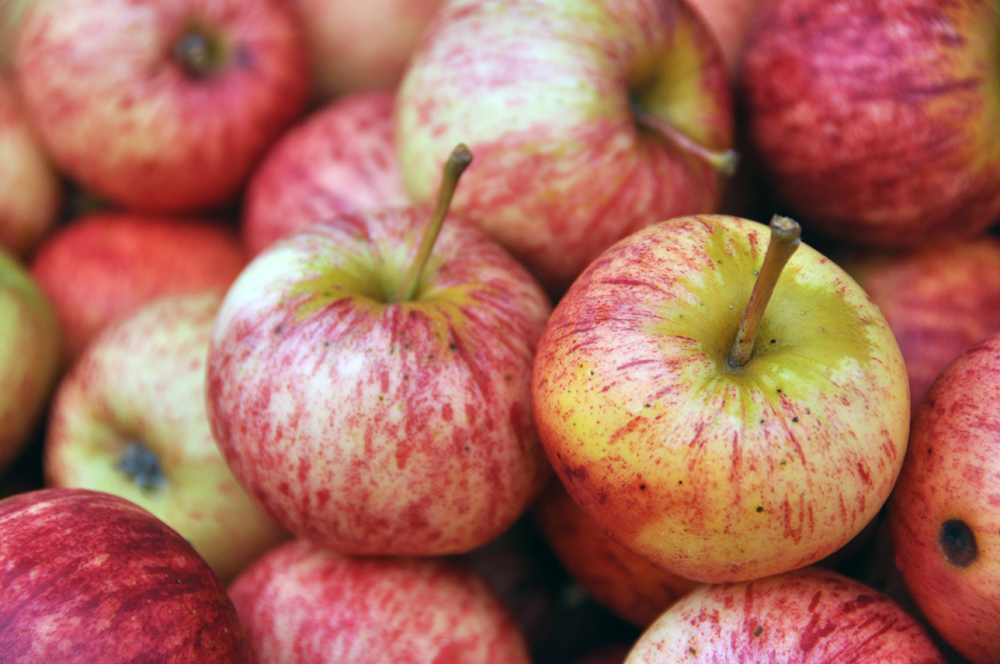By Deb Morris, PCFMA
The aroma of apple pie on a September day, the smooth flavor of homemade apple butter on toast, or a tempting square of apple cake can signal fall is on its way. There are 7,500 varieties of apples in existence throughout the world—2,500 of which are grown in the United States.
Of course, you are not going to find this many kinds in a grocery store, but you may be surprised at the seemingly endless selection of heirloom apples, most of which are relatively uncommon, at a farmers’ market. Each apple brings its own history and interesting name.
After almost disappearing, older apple varieties, popular 50 to 100 years ago, have been making a comeback. Discerning farmers’ market customers have learned to appreciate a delightfully sweet or tart heirloom apple over the waxed, shiny, often flavorless varieties that are available in the supermarkets. Each heirloom has a distinctive flavor profile, gorgeous skin color, and crisp bite that are sure to become favorites.
Many of the commercial apple varieties we see in grocery stores are hybrids, combining the favorite attributes of various heirlooms – namely, predictable traits of size, color, transportability, and storage life.
Heirlooms, on the other hand, are open pollinated and have been preserved and passed along for generations in their “pure” form. These heirlooms are particularly important for genetic diversity. Maintaining rich genetic diversity is essential for increased disease resistance, temperature hardiness, and for preserving the species.
Today many apple growers have returned to growing heirlooms. Gravenstein apples, a variety named by the Danes, meaning “gray stone,” was introduced to Northern California in the 19th century by Russian fur traders. It is one of most common heirloom apples and grows mostly in the Sebastopol area. The heritage Fuji and Pink Lady apples also have a long history. These apples, among others, were brought back from near extinction by local farmers who desired to save these older breeds.
Thick-skinned apples, because they hold their shape, tend to be good for baking whole. Try Fuji, Pink Lady, or Gala. You might find the early harvest Gravenstein apple, one of the true heirloom varieties still grown. They are good for apple sauce, cider, and just plain good eating. Tart apples are best for baking because their flavor holds up. Try Pippin, Granny Smith, Empire, or Rome.
Rainbow Orchards from Apple Hill in Camino offers quite a few varieties. J&J Ramos Farm and Lujan Farms from Hughson have nice varieties, and Cipponeri Farms from Turlock offer tasty apples as well. The different apples from these farmers range from the more common heirlooms like Pink Lady, Gala, and Fuji apples to the delicious Jonagold, Braeburn, Mohawk, Chieftain, and Heaven Sent.
This fall, branch out for a tastier fruit from the California farmers who bring them to you at a local farmers market.

